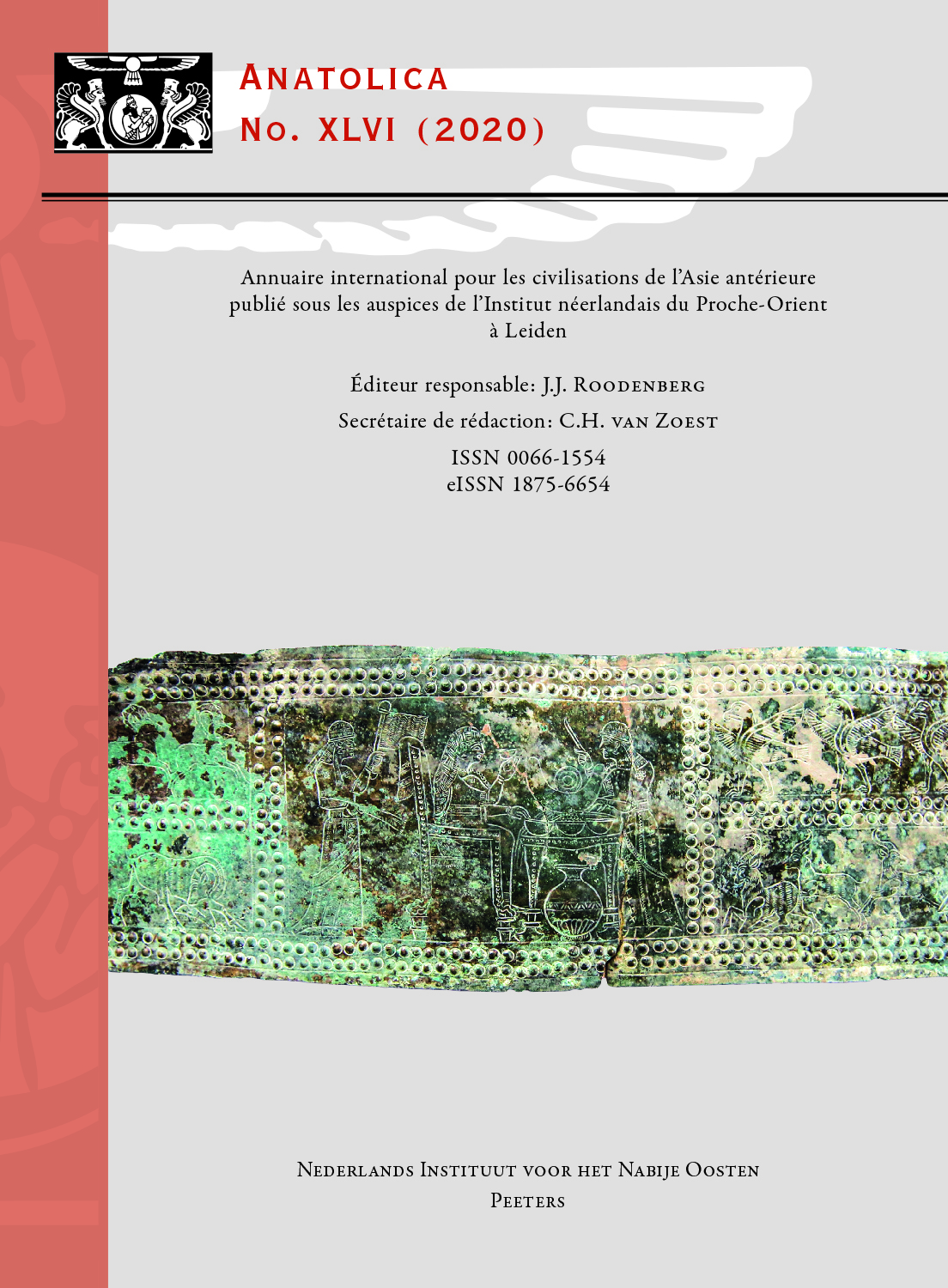 previous article in this issue previous article in this issue | next article in this issue  |

Preview first page |
Document Details : Title: The Van Plateau during the Urartian Period Subtitle: A Spatial Analysis of Fortified Settlement Patterns Author(s): DAN, Roberto , SALARIS, Davide Journal: Anatolica Volume: 48 Date: 2022 Pages: 13-48 DOI: 10.2143/ANA.48.0.3291912 Abstract : Considered as an isolated ecological niche surrounded by highlands, the plain of Van certainly represents a privileged case of analysis due to the orographic conformation of the territory and the amount of archaeological data that can be confidently referred to the Urartian period. In modern-day eastern Turkey, the urban centre of Van is indeed considered an ideal place for the capital of a state that found itself within a crucial area standing as a crossroads between the Mediterranean and Anatolian world to the west, the lands of the Asian steppes to the north and east, and Mesopotamia and the Iranian plateau to the south. Significantly, the plain of Van includes almost eighty archaeological sites – dated between the 9th and 7th centuries BC – with evident elements attributable to the Urartian culture. Through the use of GIS technologies, particular attention has been paid to the complex of fortified structures – generally built in advantageous positions – that guaranteed high defensibility and control of both territorial and road axes that entered the plain. In this way, this contribution aims to bring technical research closer to what could have been the methods of interaction between humans and the environment in ancient times within an area of central importance in the Ancient Near East. From this perspective, specific aspects of the settlement pattern developed in the Urartian era will be determined representing the first step of a broader analysis of the ways of state interaction with the entire Urartian territory. |
|


